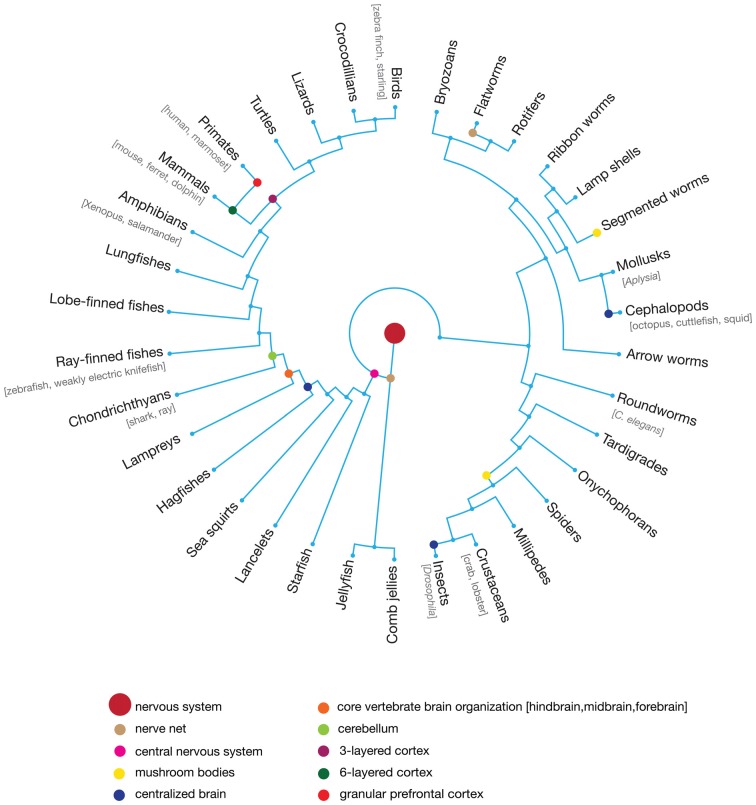Figure 1.
Circular evolutionary tree of representative animal taxa that emerged following the evolution of the nervous and vestibular systems. While junctions of branches represent the degree of phylogenetic relatedness over evolution, distance along the tree does no scale with actual time in natural history. Colored circles indicate last common ancestor for phylogenetic groups that exhibited a particular characteristic of the nervous system which can be used to reconstruct shared, unique and convergent features of nervous systems. The central nervous system emerged early in animal evolution and is homologous across multiple taxa, while granular prefrontal cortex is a unique property of primate brains. Likewise, the independent evolution of centralized brains in vertebrates and multiple invertebrate taxa—insects and cephalopods—represents an example of convergent evolution. The more commonly used “model” organisms in neuroscience are listed in brackets below their taxonomic groups, though this list is not exhaustive.

